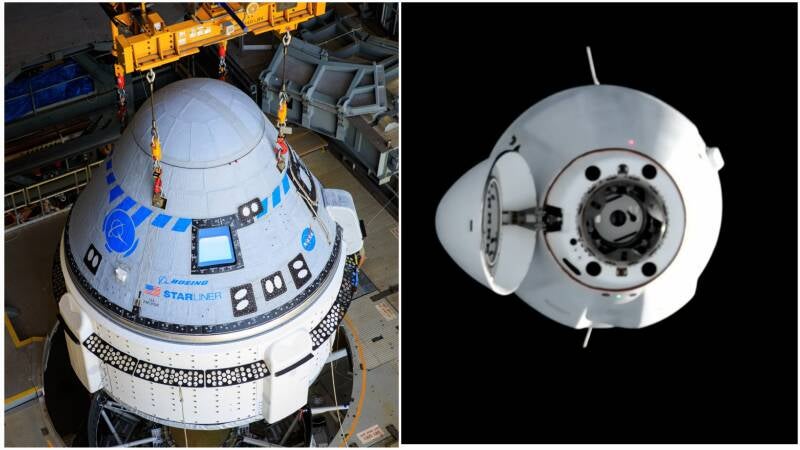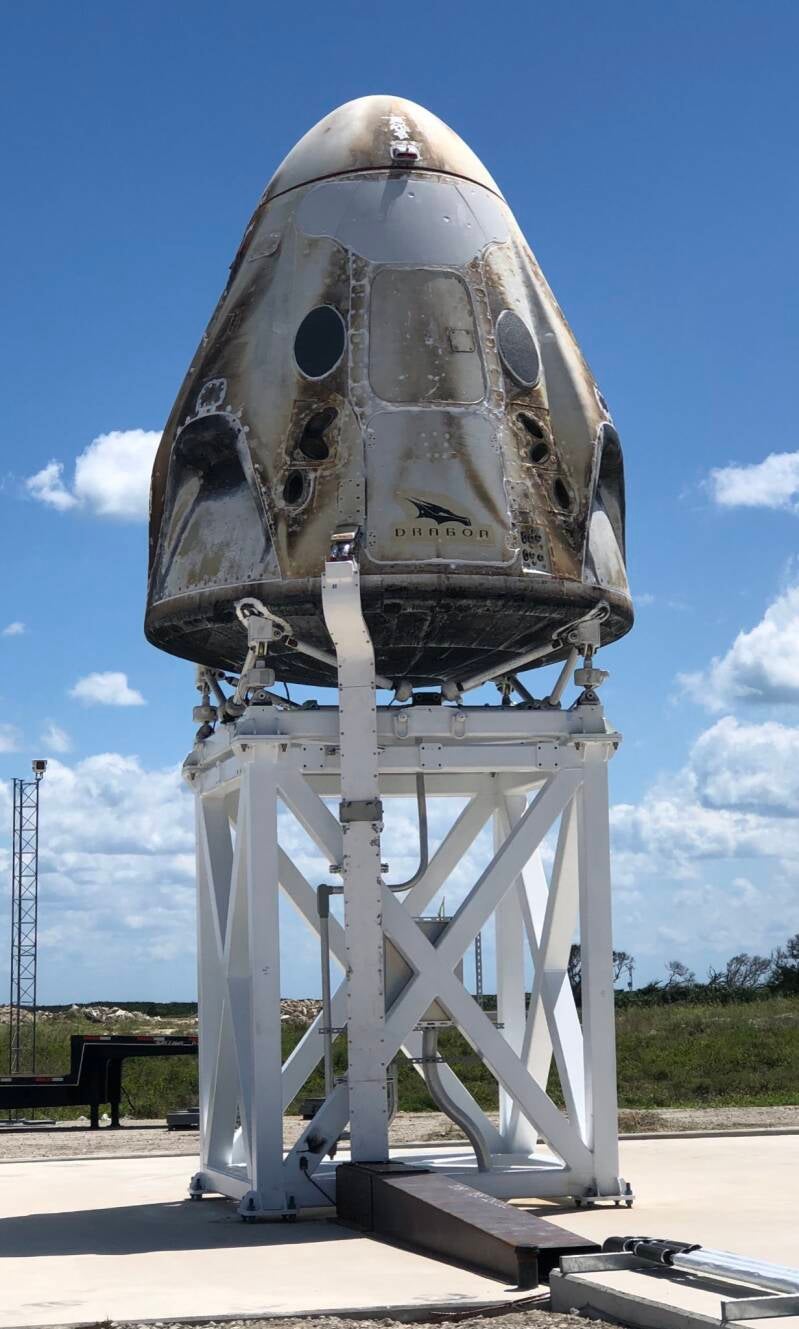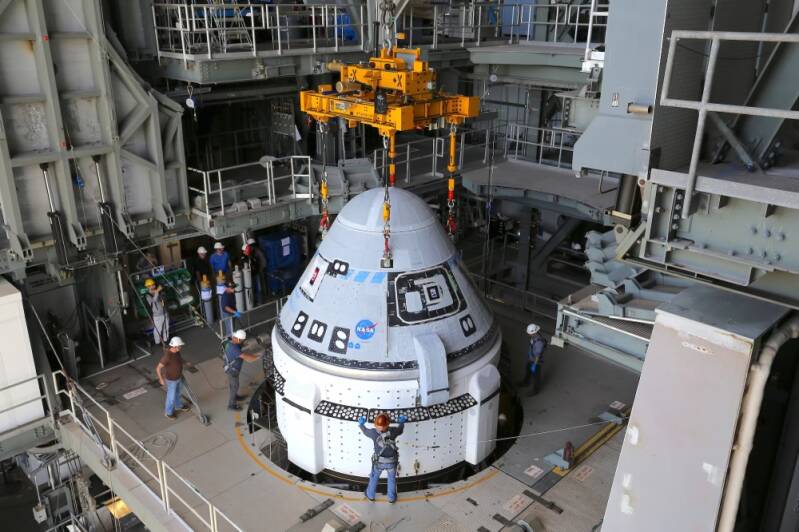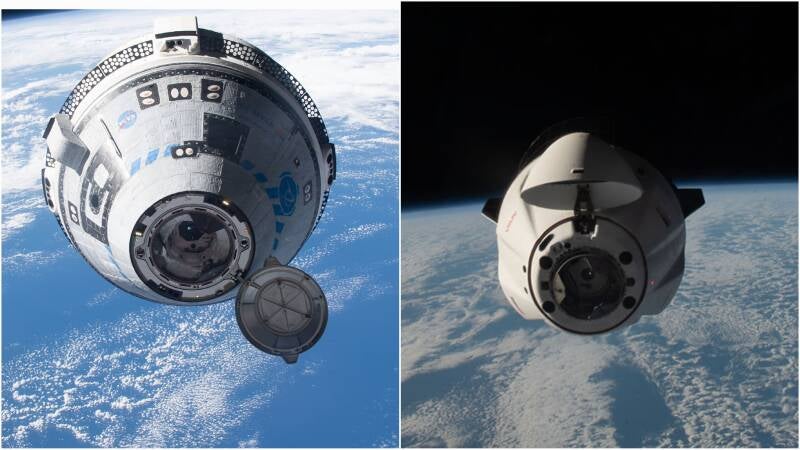
images credit NASA
The SpaceX Crew Dragon capsule's journey since the explosion during a ground test in April 2019 has been marked by rigorous investigation, redesign, and testing to ensure its safety and reliability for future manned missions. The explosion was traced back to a leak in the spacecraft's pressurization system, which allowed nitrogen tetroxide to come into contact with a titanium valve, leading to an unexpected chemical reaction. This incident led to significant design changes, including replacing the valves with burst disks to prevent similar occurrences.
Kiko Dontchev who is the VP of launch at SpaceX posted an unseen picture of the crew dragon on test stand, just before it's fateful destruction on X (formely known as twitter). On the occasion of 5 year anniversary of that fateful day, he said "A day late… but I took this photo five years ago on the morning of our first in-flight abort capsule static fire test. That test did not go as planned as the vehicle experienced catastrophic failure during superdraco ignition.

image credit SpaceX
"The following days and weeks were some of the longest I have personally been through at
SpaceX", he said.
"They were also some of the most rewarding as the team was energized to understand the anomaly and fix the problem. The failure was mega painful, but it 100% made us a better team and the spacecraft safer for astronauts.", he added.
To this, Jon Edwards, VP of falcon launch and product director replied, "The pad abort test failure was actually a gift (albeit a painful one). We learned something super important that we likely wouldn’t have learned otherwise."
Following the redesign, SpaceX successfully completed a series of static-fire engine tests, which were a particularly tense moment given the previous explosion. These tests were crucial for the Crew Dragon to demonstrate its ability to handle a launch emergency before carrying humans. The successful completion of these tests was a significant step forward, allowing SpaceX to set a launch date for an in-flight abort test which too went as planned.
The Crew Dragon capsule has made significant progress since then. Despite the setback, SpaceX has successfully launched eight operational astronaut missions to the International Space Station (ISS) for NASA, with the most recent mission, Crew-8, lifting off on March 3. The capsule has demonstrated its reusability, with some capsules flying up to ten missions. Crew Dragon has a capacity to carry up to seven astronauts and can remain docked to the ISS for up to seven months.

image credit NASA
Boeing’s Starliner: Striving to Catch Up
In contrast, Boeing's CST-100 Starliner has faced numerous delays and issues. The first crewed flight of Starliner, called the Crew Flight Test (CFT), has been delayed indefinitely due to problems with parachute components and flammable tape used on wire harnesses. This is not the first setback for Starliner, which has previously experienced a truncated uncrewed flight in December 2019 and a corroded valve issue in August 2021. Despite these challenges, NASA has remained committed to Starliner, recognizing the need for a second crew transportation system complimenting the SpaceX Dragon capsule.
Starliner has a similar capacity to Crew Dragon, able to carry a crew of up to seven people and remain docked to the ISS for up to seven months. However, Starliner is launched on Atlas V from Space Launch Complex 41 at Cape Canaveral Space Force Station in Florida, whereas Crew Dragon is launched on SpaceX's Falcon 9 rocket. Like Crew Dragon, the Starliner capsule is designed for reuse on up to ten missions and it's now preparing for a test flight with NASA astronauts aboard.
Boeing has also been focused on implementing recommendations from an independent review team formed to review anomalies experienced during the Orbital Flight Test, which prevented the Starliner from reaching its planned orbit or docking with the International Space Station. Almost 75% of the proposed actions were implemented but the mission was cut short due to anamolies.
Despite the progress made by Crew Dragon, SpaceX is not without its challenges. The company has faced scrutiny over its safety protocols and has had to address concerns from NASA and other stakeholders. However, SpaceX has demonstrated its ability to learn from setbacks and adapt, as seen in the successful implementation of Crew Dragon and it's stellar performance in carrying crew and cargo for NASA as well as private space industry.
Comparing the two spacecraft, SpaceX's Crew Dragon has already begun operational missions, having flown all of NASA's crew rotation missions to the station since its first astronaut flight in 2020. On the other hand, Boeing's Starliner is still gearing up for its first crewed test flight, which, if successful, will allow NASA to alternate between the Starliner and Crew Dragon for future missions.
In conclusion, while both Crew Dragon and Starliner have faced challenges, Crew Dragon has made significant progress since the explosion during testing in 2019. SpaceX has successfully launched numerous missions to the ISS and has demonstrated the reusability of the capsule. On the other hand, Starliner has faced numerous delays and issues, but NASA remains committed to the program as both spacecrafts are part of NASA's Commercial Crew Program and represent a new era of American spaceflight. As the space industry continues to evolve, it will be important to monitor the progress of both Crew Dragon and Starliner, as they play critical roles in the future of space exploration. The ultimate goal remains the same: safe, reliable, and efficient transportation for astronauts to the International Space Station and beyond.

image credit Boeing Space/SpaceX


Add comment
Comments
Four pictures. No text. I expect more from SpaxeX.